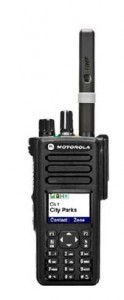-
Radio Etiquette at Events – “Go For Mike”
Whether it’s your first event or you’ve got years under your belt, it’s always good to be reminded of proper radio etiquette. It’s something that is very simple, yet consistently eludes even the best of us, especially when we want something immediately.
First, let’s have a quick primer on what etiquette means. According to Wikipedia:- Etiquette refers to conventional forms and usages: the rules of etiquette. Decorum suggests dignity and a sense of what is becoming or appropriate for a person of good breeding: a fine sense of decorum.
Easy enough. So how does that translate into the event and festival world? Pretty simple. When using a two way radio to speak to someone, utilize the following as a guide – in this example, I, Mike, am going to ask to talk to Kara:- I press down on the proper button, and if it’s a digital radio I wait for a beep. Then I say, “Mike for Kara”. This properly identifies who I am and who I wish to speak with.
Note what I don’t say: “Kara!” “Hey Kara, you out there?”
Or even worse, I don’t even say her name: “I really need that gaff tape delivered to the stage!” - I wait until Kara replies. Around 10-20 seconds is acceptable. If I hear nothing, I try one more time: “Mike for Kara”. If I don’t hear back, I either try to reach someone else that can help me, or I try texting or calling Kara on her phone.
- At the end of the conversation, it often makes sense to say “Copy”, “Good Copy”, “Copy That”, “10-4”, or some other form of acknowledgement, so they can carry on and you can, too.
In this example, I’m going to respond to someone calling me, in this case, Kara again:- I hear (ideally) “Kara for Mike” on the radio.
- If I am free to talk, I respond back with “Go for Mike”. That way she knows it’s me responding back.
If I am not free to talk, I respond back with “Standby for Mike.” The word “standby” is preferred over “hold” because “hold” sounds very much like “go”, and you’ll often hear people try to continue the conversation when you aren’t ready for it.
After a while, or if they know the person well enough, they’ll simply say “Go”, “Send it”, or “Go for me”. This is acceptable but ideally you would identify yourself by name, especially if it’s with a new team that doesn’t know each other that well yet.
 And that is it. Some people like to do the reverse and say “Kara for Mike” instead of “Mike for Kara”, but I prefer the latter. Either way works fine, but it can be confusing at first so it’s best the entire event team stays consistent – pick one method or the other.
And that is it. Some people like to do the reverse and say “Kara for Mike” instead of “Mike for Kara”, but I prefer the latter. Either way works fine, but it can be confusing at first so it’s best the entire event team stays consistent – pick one method or the other.You’d be surprised by how many people don’t follow these sort of guidelines, and as a result, sometimes already busy channels will have even more traffic and noise, preventing those who have urgent and important requests from getting through. So whenever possible, keep it simple, short, and use the above as a guide and that should keep everything running smooth – at least radio wise – at your event.






